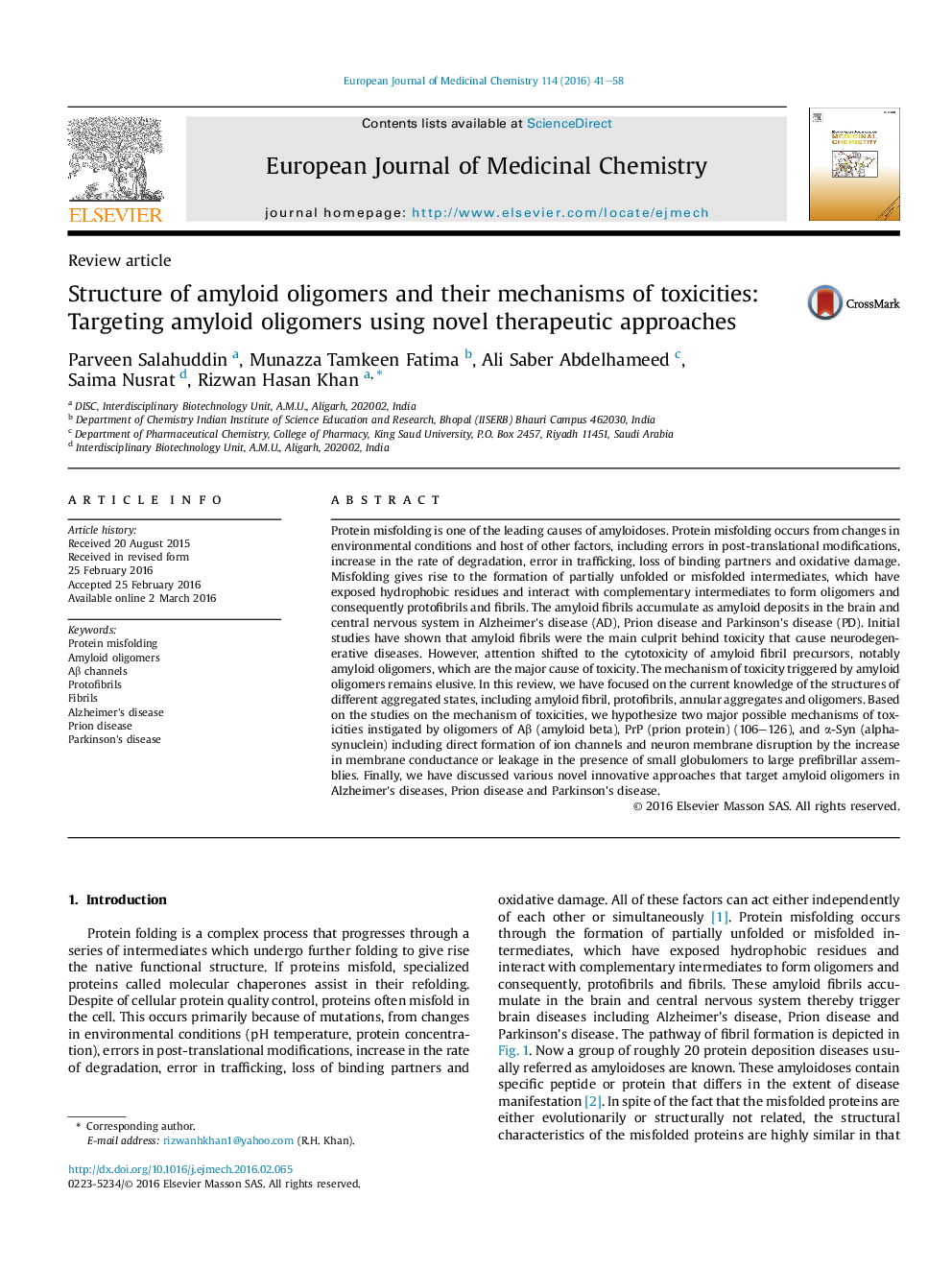| کد مقاله | کد نشریه | سال انتشار | مقاله انگلیسی | نسخه تمام متن |
|---|---|---|---|---|
| 1398623 | 1501102 | 2016 | 18 صفحه PDF | دانلود رایگان |
• Protein misfolding is one of the leading causes of amyloidoses.
• The amyloid oligomers, protofibrils and fibrils show an increasing order of organization.
• The amyloid fibrils accumulate as amyloid deposits in the brain and CNS in brain diseases.
• There are several major possible mechanisms of toxicities instigated by oligomers.
Protein misfolding is one of the leading causes of amyloidoses. Protein misfolding occurs from changes in environmental conditions and host of other factors, including errors in post-translational modifications, increase in the rate of degradation, error in trafficking, loss of binding partners and oxidative damage. Misfolding gives rise to the formation of partially unfolded or misfolded intermediates, which have exposed hydrophobic residues and interact with complementary intermediates to form oligomers and consequently protofibrils and fibrils. The amyloid fibrils accumulate as amyloid deposits in the brain and central nervous system in Alzheimer's disease (AD), Prion disease and Parkinson's disease (PD). Initial studies have shown that amyloid fibrils were the main culprit behind toxicity that cause neurodegenerative diseases. However, attention shifted to the cytotoxicity of amyloid fibril precursors, notably amyloid oligomers, which are the major cause of toxicity. The mechanism of toxicity triggered by amyloid oligomers remains elusive. In this review, we have focused on the current knowledge of the structures of different aggregated states, including amyloid fibril, protofibrils, annular aggregates and oligomers. Based on the studies on the mechanism of toxicities, we hypothesize two major possible mechanisms of toxicities instigated by oligomers of Aβ (amyloid beta), PrP (prion protein) (106–126), and α-Syn (alpha-synuclein) including direct formation of ion channels and neuron membrane disruption by the increase in membrane conductance or leakage in the presence of small globulomers to large prefibrillar assemblies. Finally, we have discussed various novel innovative approaches that target amyloid oligomers in Alzheimer's diseases, Prion disease and Parkinson's disease.
The pathway of formation of different aggregated states and their structures.Figure optionsDownload as PowerPoint slide
Journal: European Journal of Medicinal Chemistry - Volume 114, 23 May 2016, Pages 41–58
